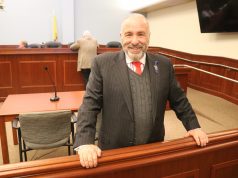Yasmin Davis is a Miami-based real estate professional who enjoys learning about the history of real estate in her region. One of Yasmin’s favorite time periods to study is the 1920’s, as it had a profound impact on the trajectory of Florida’s real estate development moving forward.
Yasmin realizes that we can learn a great deal about real estate and its trends by exploring the past and, here, provides a brief overview of 1920’s Florida real estate.
1920’s Florida’s Real Estate Growth
Real estate in Florida during the 1920’s was marked by a period of rapid growth and speculation followed by a devastating crash. This decade, often referred to as the Florida Land Boom or Florida’s First Real Estate Bubble, saw a massive influx of people, investment, and development in the state, especially in cities like Miami and Miami Beach.
The extension of the Florida East Coast Railway all the way to Miami and eventually to Key West captured the interest of many seeking to enjoy the tropical paradise Florida exemplified. Northern tourists, as well as potential new residents, took notice of the opportunities the state offered.
The 1920s brought a nationwide economic boom, and Florida was no exception. The state’s warm climate and scenic beauty attracted people looking for new prospects, retirees, and vacationers. This led to a surge in demand for real estate. Developers were quick to capitalize on the demand. Vast tracts of land were subdivided and sold to investors, often without proper infrastructure or planning. The promise of quick riches fueled speculation, and people bought land with the expectation that its value would continuously skyrocket. Many investors bought land and properties with the hope of quick and substantial profits. Many even purchased land sight unseen. Prices of real estate properties rose sharply, and some investors became millionaires overnight.
Early Marketing for Florida Real Estate
Developers and promoters advertised Florida as a paradise, showcasing its beaches, tropical weather, and potential for wealth. Many used aggressive marketing techniques to attract buyers. They often employed elaborate promotional events and advertisements to entice people into purchasing properties.
Yasmin Davis mentions that one famous example is the “land boom” parties and parades that were organized to showcase Florida’s real estate opportunities. Alongside the growth in land sales, there was a construction boom. New hotels, resorts, and housing developments sprang up across Florida, particularly in cities like Miami, Miami Beach, and Coral Gables. The Mediterranean Revival and Art Deco architectural styles became popular during this period. New communities, golf courses, and resorts were built to accommodate the growing population of both permanent residents and tourists.
Land Development Makes Way for More Real Estate Opportunities
Millionaire entrepreneur Karl Fisher saw an opportunity to get even wealthier by developing a mosquito infested island now known as Miami Beach. He transformed the island into a habitable terrain by financing the construction of a bridge from the mainland, clearing its wild vegetation, dredging sediment from the bay to fill in the island’s swampy land, building the luxurious Lincoln and Flamingo Hotels and incorporating the city of Miami Beach.
In 1899 Reverend Solomon Greasley Merrick purchase a 160-acre tract of land. He died in 1911 and his son George took over the plantation. By 1921 his holding grew to 1,600 acres.
George Merrick hired a team of talented artists, planners and architects to ensure a city of tree-lined boulevards and Ivy-covered mansions. He built Coral Gables into a one of the first major planned communities in the United States. The famous Venetian Pool and luxurious Biltmore Hotel were among the many attractions to this “City Beautiful” as it was nicknamed. By 1926, Coral Gables included almost 2,000 homes, 2 hospitals and 6 hotels.
Yasmin Davis speaks to how Florida’s legislatures also enacted policies to attract residents by offering a low tax environment. As a result, the state’s population grew rapidly during this time, with many northerners moving to Florida. The state’s population doubled from approximately 750,000 inhabitants in 1910 to 1,471,000 in 1930.
Florida’s Real Estate Development Challenges
However, this growth came with big challenges. The 1920s Florida real estate boom and subsequent bust serve as a cautionary tale about the dangers of speculative real estate markets and the importance of responsible development and infrastructure planning. It also highlights the vulnerability of the region to natural disasters like hurricanes. Inadequate infrastructure often lagged behind the rapid development. Roads, bridges, and utilities were insufficient for the growing population, leading to challenges for those who had invested in property. In addition to the economic factors, natural disasters, such as the Great Miami Hurricane of 1926, played a role in the decline of Florida’s real estate market. The hurricane caused widespread damage and loss of life and further eroded investor confidence.
Florida’s real estate bubble burst in 1926-1927, leading to a sharp decline in property values. Speculators who had bought land at inflated prices were left with worthless investments. Banks and developers went bankrupt, and the construction boom came to an abrupt halt. Several factors contributed to the crash, including overbuilding, inflated land prices, and rising interest rates. As a result, many investors lost their fortunes, and the real estate market collapsed. The collapse of the Florida real estate market had a profound impact on the state’s economy. Many banks and businesses went bankrupt, and numerous properties were foreclosed. The 1920s land boom and bust are considered a precursor to the Great Depression which began in 1929 and affected the entire country in the 1930s.
Conclusion
Florida’s real estate market remained depressed throughout the 1930s, but it eventually began to recover in the late 1930s and 1940s, driven by the growth of tourism and the military presence during World War II.
It’s important to note that the 1920s Florida real estate boom and subsequent crash serve as a historical cautionary tale about the dangers of speculative bubbles and the importance of responsible real estate practices.








